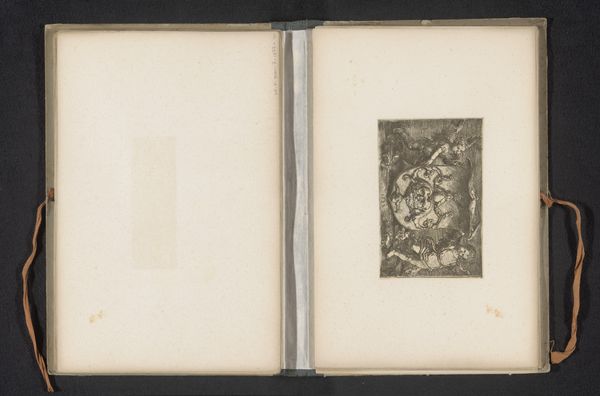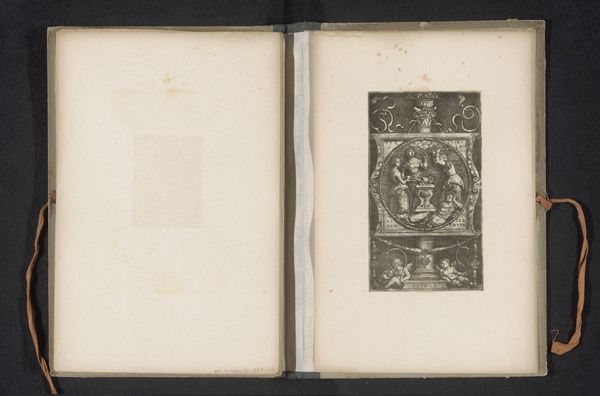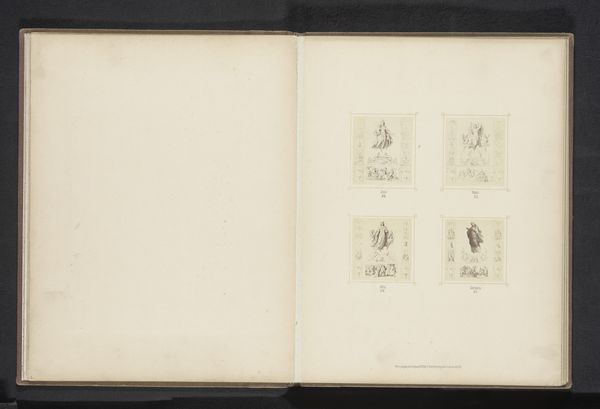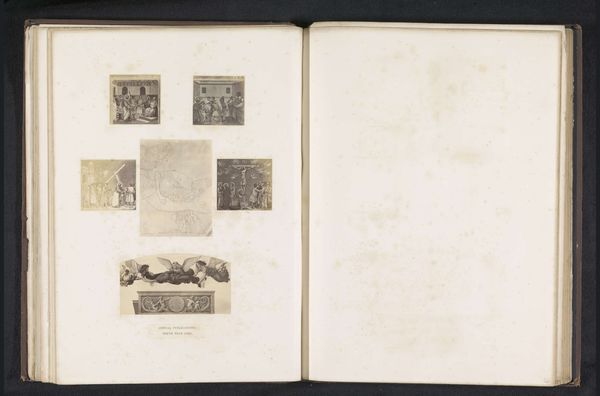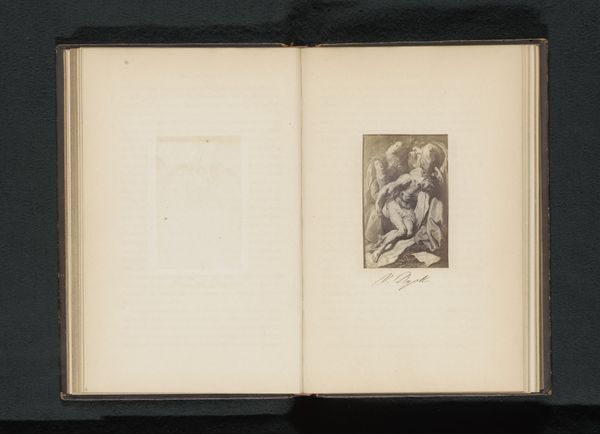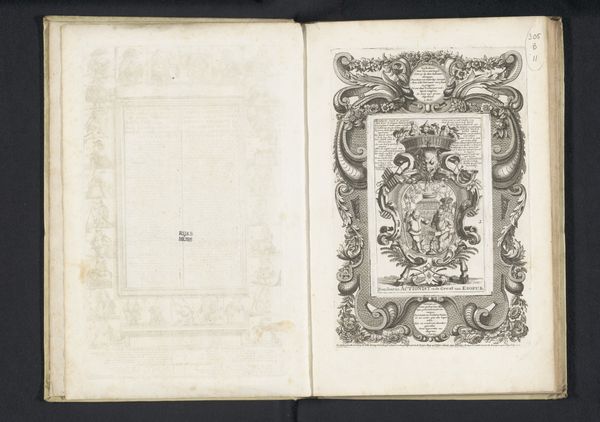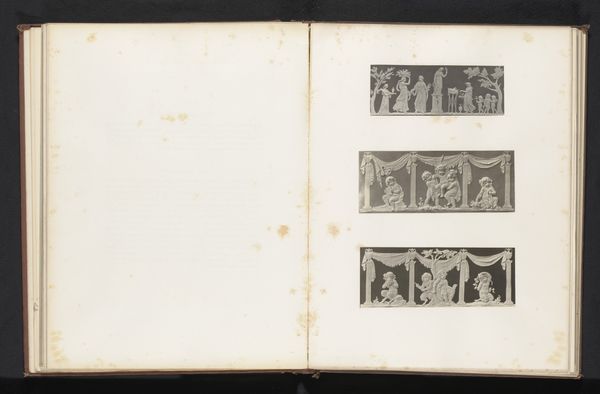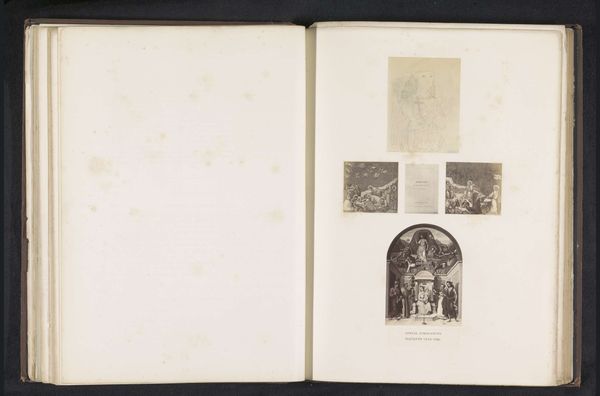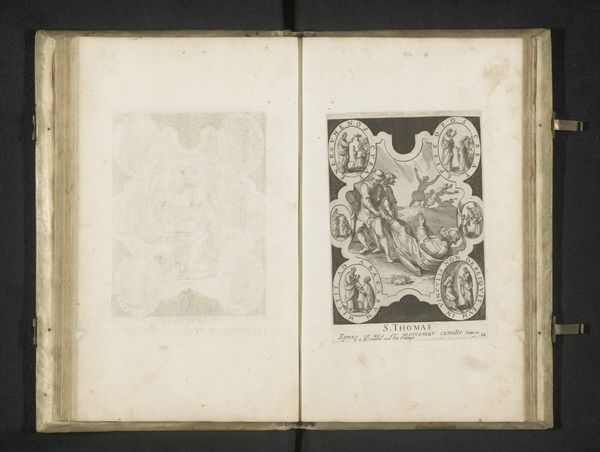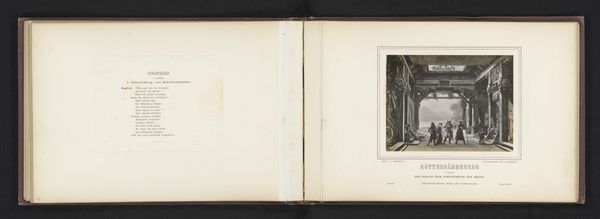
Twee portretten van Catharina de' Medici en van Hendrik II van Frankrijk before 1878
0:00
0:00
print, photography
#
portrait
# print
#
11_renaissance
#
photography
#
history-painting
Dimensions: height 95 mm, width 138 mm
Copyright: Rijks Museum: Open Domain
Curator: Here we have an intriguing set of portraits: “Twee portretten van Catharina de' Medici en van Hendrik II van Frankrijk,” or Two portraits of Catherine de’ Medici and Henry II of France. These were made before 1878 by an anonymous artist, reproduced through photography and printmaking techniques. Editor: They strike me as quite formal, austere even. The tight framing of their faces and the dark outlines of the prints lend them a severity. I immediately start thinking about how these materials might have impacted their distribution and consumption back in the day. Curator: Absolutely. The choice of imagery is far from accidental. Portraits such as these acted as powerful symbols of dynastic strength and stability. Notice the meticulous detail in their royal attire – the pearls, the crowns – emblems designed to communicate their elevated status. The choice of these images reminds us of the continuity of power, and its representation through printed form. Editor: But who was consuming them? Was it exclusively nobles bolstering their own status with images of those above, or was there a broader public appeal facilitated by these reproducible formats? We see the print on the one hand, the photographic reproduction on the other. We have a photo *of* a print. I wonder, also, how this anonymous photographer intervened. What choices did they make about how this object—this history—would be represented to later audiences? Curator: I see your point. What interests me are the deeper narratives at play. Catherine de' Medici, for instance, wasn't just a queen; she was a major power broker in a turbulent era, and that weight comes through even in this formal portrait. Editor: True, but the format is very telling. It shows the development and interplay between reproductive media in the 19th century and earlier printmaking traditions, influencing both access and perception. It gives a sense of history remade through evolving means of production. Curator: Well, examining these dual portraits reveals both the constructed nature of power through iconic images and a tangible link to the ever-changing technologies that mediate our relationship to the past. Editor: Yes, and analyzing them from a material perspective grants us insights into production, consumption, and ultimately, the shifting social relations embedded within the images themselves.
Comments
No comments
Be the first to comment and join the conversation on the ultimate creative platform.
